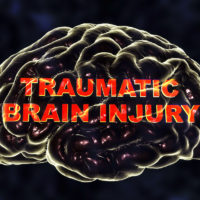AFTER TRAUMATIC BRAIN AND SPINAL CORD INJURIES, RECOVERY IS FAR FROM SIMPLE

The central nervous system, consisting of the brain and the spinal cord, is the command center for the human body. The spinal cord is essentially the ‘motorway’ that is involved in the co-ordination of the body’s movement, with signals carried from body parts to the brain relating to heat, cold, pressure, pain and the position of your limbs. Each year, traumaticbraininjury.com tells us, approximately 12,000 new cases of spinal cord injuries are reported in the US. Of those 12,000 new cases, fewer than 1% of persons experience complete neurologic recovery by the time they are discharged from the hospital and over 87.7% of persons once discharged will be sent to a private, non-institutional residence, most likely their home. 5.9% of injured persons will be discharged to a nursing home and others will be discharged to hospitals, group living situations or other destinations for continued care.
As personal injury attorneys, we are called upon to deal with the health care and living expenses for persons who have sustained a spinal cord injury. If your spinal cord injury was caused as a result of actions performed by other persons, you can file a lawsuit to recover your medical expenses and to provide for continuous care. But that in itself is far from a simple matter. A civil lawsuit requires gathering:
- medical records
- witness statements
- physical evidence
- investigative research
Remember, a civil lawsuit is about financial recovery. And, in the case of a traumatic brain or spinal cord injury, in addition to the actual medical costs, expenses are likely to include:
- extended hospital stays
- visits to rehabilitation centers
- doctors’ visits
- wheelchairs
- vans
- medical supplies
- prescriptions
- psychological or trauma counseling
- caregiver expenses
According to the National Spinal Cord Injury Statistic Center, 41.3% of spinal cord injuries occur as a result of motor vehicle crashes. In addition to those who die at the scene of the incidents, there are 17,700 new SCI (spinal cord injury) cases each year. (Half of those injured were employed before the accident, and lost wages become a key part of the financial recovery effort.) But, if a person is no longer able to work, where will all the money come from to pay for the many expenses?
What about insurance? The other drivers involved in the accident may have responsibility to compensate you for injuries and losses. If the drivers do not have auto insurance, you may be able to receive benefits from your own policy through the uninsured motorist provisions of your own auto insurance policy. Once those benefits are exhausted, your health insurance carrier (perhaps from your employer) will pay bills. If you have a short-term and/or long-term disability insurance policy (either through an employer or your own policy), benefits may be available through that carrier. The drivers involved in the accident may have some responsibility to compensate you for injuries and losses. If those drivers do not have auto insurance, you may be able to receive benefits from your own auto insurance policy through the uninsured motorist provision.
What about government benefits? You may be eligible for insurance benefits through Social Security, Medical Assistance and/or Medicare.
Remember my pointing out that recovery isn’t simple? Catastrophic automobile accidents may be caused by drivers, by the vehicle, the roadway, or some combination of these factors, so part of our task as attorneys is to effectively investigate and analyze each of these factors.
One big part of the legal challenge is the fact that the damage from a traumatic brain or spinal cord injury may not be immediately apparent. As healthprep.com points out, an accident victim might experience delayed sensory issues and be unable to interpret the world around them in the correct way. A person with sensory problems might have trouble understanding touch, temperature, and limb position. People might experience problems with their depth perception and have difficulty judging distance, and show an intolerance to light.
It’s important to understand the legal theory on which your case will be based, explains Nolo.com. Most brain injury lawsuits are based on a legal theory called negligence. A negligence claim requires the person bringing the lawsuit prove that someone else’s bad driving, or the manufacturer of defective automotive equipment was responsible for the injury. Not every doctor who examined an accident victim shortly after the incident may be knowledgeable in traumatic brain injury; not every personal injury attorney is experienced enough to help obtain the necessary expert medical opinions and go up against a big insurance company with its team of lawyers.
As personal injury attorneys in Indiana, our mission is to help sufferers of traumatic brain and spinal injuries get the compensation they need – if indeed some other person or entity can be proven liable. For us, it’s not just about the money, but about helping injured people put their lives back together.




